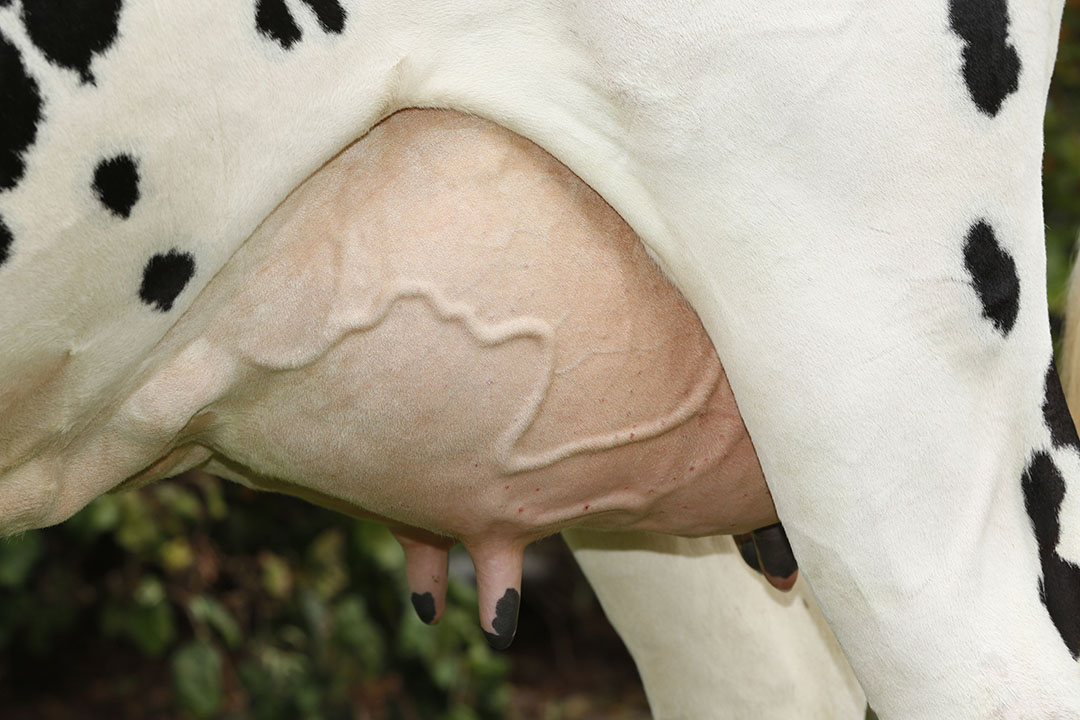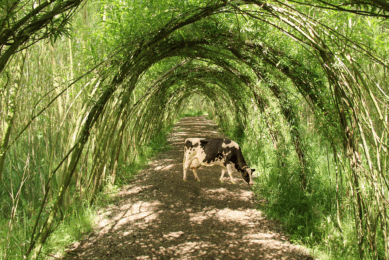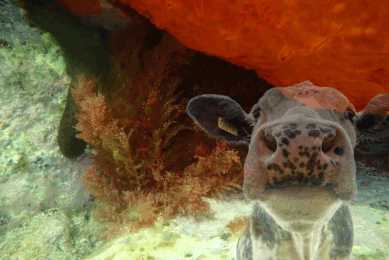Digestive, metabolic and production responses to cold stress

Although much work has been conducted to examine the effects of heat stress and other environmental factors on animal physiology and production, cold stress effects have not been widely researched. Here we look at some of the findings.
The following is a review of the limited work conducted in this area, with particular reference to the digestive physiology and metabolism of cold-stressed cattle and their production response to such adverse condition. Management and feeding strategies to be adopted for alleviating cold stress effects are also looked at.
Feed intake and chewing behaviour
Cold stress usually stimulates appetite and the increase has been assumed to reflect the increase in the metabolic demands of the animal. Modification of chewing behaviour also occurs on cold exposure. Rate of eating increased by 22-31% for chopped hay and up to 10% for pellets at fixed intakes, thereby reducing the duration of eating. Rumination time in cattle also increases in the cold, perhaps to compensate for decreased eating time. Chews per cycle of rumination also increased by about 10% due to cold exposure and by about 20% due to lactation. Thus it appeared that increased feed intake of these cold, lactating animals was accommodated by proportional increases in the chewing effort, rather than by increases in efficiency of chewing.

Heat Stress: Livestock animals possess several adaptive mechanisms to cope with heat stress challenges, but these compromise the animal’s productive responses. Nobody has a magic wand to be able to change the weather, but in this special edition, solutions are explained.
Digestibility
Table 1 shows dry matter (DM) and nitrogen (N) digestibility values in heifers and cows exposed to a low outdoor temperature compared to the animals kept indoors. The effect of cold exposure was more obvious for the calves compared to the matured cows, suggesting that the effects of temperature on digestion may be following the general principle that animals of larger body size are less likely to be affected by environmental temperature changes than small animals.
Despite the reduced digestibility, there is an associated increased appetite, as indicated above. In situations of abundant food supply, an animal may benefit more from the increase in appetite than the loss from the reduced ability to digest feed.
Metabolic responses to cold stress
Blood flow and endocrine changes
Exposure to cold decreases the portion of cardiac output flowing to the gastrointestinal tract, lower limb hoof bone, and diaphragm, the latter being consistent with a reduced respiration rate. Cold stress also increases secretion of the catabolic hormones cortisol and catecholamine and the more modest changes in secretion of the anabolic hormone insulin which results in a net catabolic response. The combined effect of these endocrine changes is to increase the mobilisation of energy sources for use by the shivering muscles.
Pregnancy ketosis
Cold weather is known to increase the susceptibility to pregnancy ketosis. This may be a nonspecific response to stress or starvation. Additionally, some of the metabolic adaptations to cold exposure may increase susceptibility to ketosis when food supplies are limited.
Hypomagnesemia
Cold exposure increases the incidence of hypomagnesemia in ruminants due to the reduced plasma magnesium levels. Exposure to a moderately cold environment failed to depress plasma magnesium concentrations but did act synergistically with starvation to induce hypomagnesemia. Increased rates of lipolysis during cold exposure was the likely precipitating factor since the hypomagnesemia response to acute cold exposure was inhibited by the anti-lipolytic agent sodium nicotinate. Elevated thyroid hormone levels in a cold environment may potentiate the effect of rapid lipolysis.

Production responses
Growth
Growth rate and feed conversion efficiency of cattle are clearly reduced under cold stress as a result of the combined effects of cold on digestive function and increased basal metabolism. Also, the maintenance energy requirement of cattle has been calculated to increase by 0.91% for each degree below a temperature of 20°C to which animals have been adapted, thereby reducing the efficiency of energy utilisation for growth and other biological functions.
Studies have also shown that cold stress influences protein turnover in ruminants. The protein degradation rate was increased more than synthesis, resulting in a loss of muscle mass and carcass quality.
Pregnancy
Pregnancy may not be detrimentally affected by cold stress. If, however, too much reliance is placed on using body energy reserves where the feeding level is insufficient or protein is deficient, complications such as the weak calf syndrome may arise. Furthermore, if body condition is severely reduced, cows may have reduced lactation potential and may experience delays in rebreeding.
Lactation
Cold stress causes a reduction in milk secretion in lactating cows. Local cooling of the mammary gland and reduced mammary blood flow may contribute to the decline in yield but cannot account alone for the response. It was demonstrated that cold exposure for 24h decreased glucose extraction by the udder, while glucose utilisation by non-mammary tissues tended to increase, as occurs in non-lactating ruminants. The increased responsiveness of non-mammary tissues to insulin during prolonged cold exposure would, therefore, reduce glucose availability to the udder. When coupled with changes in blood flow, this may account for the reduced mammary gland glucose uptake and lactose secretion.
Also read: Tips for feeding new-born calves in winter
Management strategies
Weather conditions cannot be controlled, but there are some management strategies to reduce the effects of cold on cows and hence reduce costs and improve production efficiency:
- Monitoring temperature and increasing feeding in response to cold weather. Cows in the last trimester require additional grain feeding during periods when the effective temperature falls below the lower critical level.
- Protecting animals from the wind which increases cold stress on animals.
- Providing adequate dry bedding makes a significant difference in the ability of cattle to withstand cold stress.
- Keeping cows clean and dry greatly improves insulating properties and make cows less susceptible to cold stress.
- Providing additional hay and grain. If wet feeds are fed, they should not be frozen.
- Making sure that cows have ample water available at all times. Limiting water will limit feed intake and make it more difficult for cows to meet their energy requirements. Frozen troughs and excessively cold water seriously limit water intake.
- Cold weather may interact with the maturity and composition of feed materials. The formulation of the diet fed to cold-stressed animals should, therefore, be adjusted accordingly.











